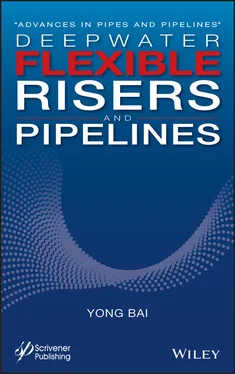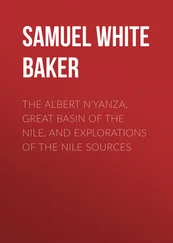(4.13) 
where A is the cross-sectional area of a single wire, APj , with j = 1, 2, stands for inner and outer HDPE layers, is the area of the cross-sections, and EP is the secant Young’s modulus of HDPE material.
In this section, the tensile behavior of the flexible pipe is simulated using the finite element software ABAQUS [19] in order to verify the reliability and accuracy of the theoretical model.
4.3.1 Pressure Armor Stiffness
Firstly, the validity of the theoretical formulation for the pressure armor radial stiffness is verified as the accuracy of the theoretical value K will directly affect the final outcomes.
The imported profile of the pressure armor for the simulation is chosen based on API 17B [17], and its relative dimensions are shown in Figure 4.7. Two pitch lengths of the corrugate section are used to validate the real one, whose longitudinal section is also shown in Figure 4.7.
The developed simulation considers a 3D ring model where the lay angle is neglected. As discuss by Neto et al . [20], this simulation illustrates good agreement comparing results to full 3D pipe model when solving the radial problem, even if initial imperfections are not considered, as shown in Figure 4.8. As the ring is symmetric to xy plane, it is possible to run the simulation for half of the 3D ring, which can further improve the speed of the simulation. It is noteworthy that, no initial imperfection or ovality is introduced in this simulation as its fundamental purpose is to obtain the relationship between the ring’s radial displacement with the external pressure.
The matrix of the inertia for the cross-section of pressure armor can be obtained from AutoCAD referring to Figure 4.3, and the corresponding results for Figure 4.7are shown in Eq. (4.14), which could be used in Eq. (4.4)to calculate its smallest moment of inertia
(4.14) 
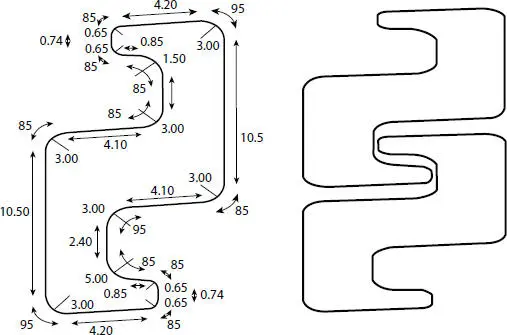
Figure 4.7 Pressure armor-parameterized cross-section (lengths in millimeters and angles in degrees) and profile used for FEM.
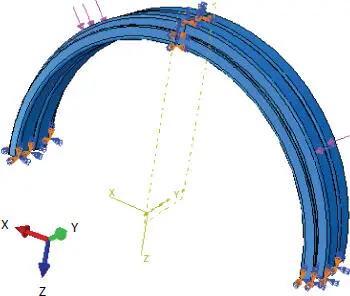
Figure 4.8 Pressure armor’s load and boundary conditions.
Material properties and other parameters needed for the computation are listed in Table 4.1. The pressure armor is considered as linear elastic. Based on the formulations illustrated in Section 2.1, the radial stiffness could be calculated as 253.08 MPa/mm.
Due to the intricate shape of the imported cross-section and potential contacts a contact of type “General contact” is employed to simulate the interactions between the two parts. In ABAQUS environment such contact typology is not related to any specific configuration but is able to relate two surfaces of general shape (even of complex shape as in the present case). In order to assume that surfaces in contact slide freely without friction “Frictionless” tangential behavior is selected, while in order to carry out the contact pressure analysis “Hard contact” normal behavior with “Allow separation after contact” is chosen. This means that ABAQUS is able to put in contact two surfaces by indicating “Hard contact” option and the two surfaces during simulation might not be in contact according to the algorithm “Allow separation after contact” as discussed in [16]. The latter is defined by (p-h) model, which relates the contact pressure p among surfaces and the overclosure h between contact surfaces. When h < 0, it means no contact pressure, while for any positive contact h is set equal to zero, as discussed in [21].
Table 4.1 Parameters for pressure armor layer.
| Parameters |
Value |
| Number of tendons n |
1 |
| Coefficient factor K |
1 |
| Young’s Modulus E [MPa] |
200,000 |
| Poisson ration ν |
0.3 |
| Pitch length Lp [mm] |
14.86 |
| Inner radius Rinn [mm] |
76.20 |
| Thickness t [mm] |
9.84 |
The external pressure supposed as constant along the width of the ring and applied directly on the external surface. Kinematic is governed by the boundary conditions, and symmetric boundary condition with respect to the xy plane is exploited. The pitch length is kept unchanged during the simulation. U1 displacements are allowed at the bases of the ring (z = 0), while U2 displacements are allowed in the middle surface of the ring (x = 0), as shown in Figure 4.8.
C3D8R element (eight-node continuum linear brick elements with reduced integration and hourglass control) is used for the mesh of the two parts, as shown in Figure 4.9. These elements can be used for linear and complex non-linear analysis producing high accuracy results when contacts and non-linear geometry are considered, as discussed by Kim et al . [22].
Due to the frictionless contacts of this case, “Dynamic implicit” simulation is activated to obtain the radial displacements, thanks to the possibility of applying larger increments and achieve higher accuracy compared to a Dynamic explicit analysis. Large strains are activated automatically by ABAQUS environment and implementation within its FE analysis because the flag “Nonlinear geometry” has been activated during the ABAQUS simulation. Moreover, material is considered as elastic in this case, with properties shown in Table 4.1. In order to achieve relatively accurate quasi-static analysis results from the dynamic analysis, the ratio between kinetic energy (ALLKE) and strain energy (ALLSE) for the whole model should be low enough during its whole process, and their corresponding energies are illustrated in Figure 4.10, which shows that the numerical results are reliable.

Figure 4.9 Pressure armor mesh.
The external surface of the ring’s displacements in radial direction against external pressure is extracted out from 12 points, located along the external surface. The behaviors for two representative points are shown in Figure 4.11; they exhibit likely linear relationship, slightly influenced by non-linearities which can be attributed to the presence of gaps between the cross-sections.
Each curve is then linearized, and the corresponding radial stiffness can be obtained. For the pressure armor, the radial stiffness is acquired as the average among the results for the 12 points and it results in 256.22 MPa/ mm. Comparing the value with the theoretical results 253.08 MPa/mm, the percentage error is equal to 1.23%.
Once the numerical radial stiffness of the pressure armor is verified, the comparisons for the whole model are treated.
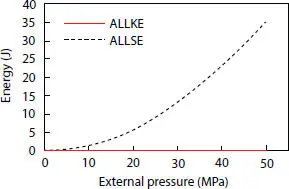
Figure 4.10 Strain and kinetic energies against load.
Читать дальше
